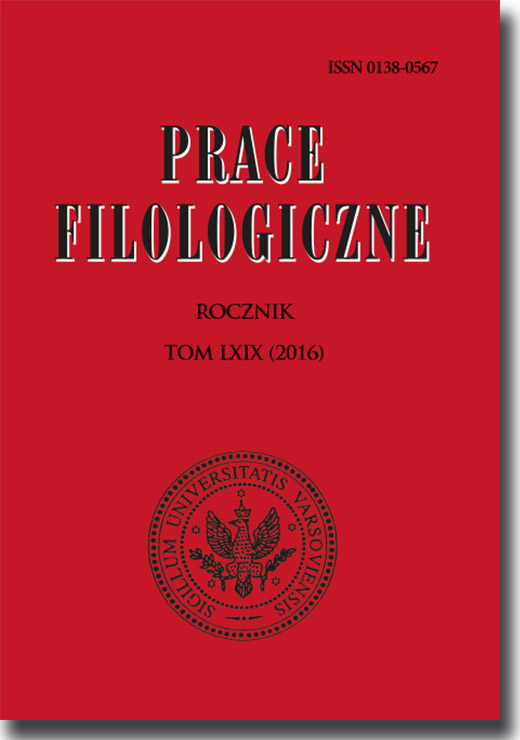Polskie nazwy źrenicy motywowane funkcją desygnatu
Polish Names for Pupil Motivated by the Referent’s Function
Author(s): Agnieszka Ewa Piotrowska, Magdalena ZawadzkaSubject(s): Language and Literature Studies, Theoretical Linguistics, Applied Linguistics
Published by: Wydział Polonistyki Uniwersytetu Warszawskiego
Keywords: historia języka; etymologia; semantyka historyczna; słowotwórstwo historyczne; {źrenica}; history of language; etymology; historical semantics; historical word formation; {źrenica} ‘pupil of the eye’
Summary/Abstract: The paper overviews the history of names for pupil that were motivated by verbs indicating the referent’s function, and that have been used both in the literary Polish and in dialects. Originally, the word {źrenica} (‘pupil’) was attested in the relics of language in various written forms due to the instability of notation rules, as well as due to varying regional realizations of the initial group {źr-}. The word consistently meant both ‘a round black hole in the central part of the eye’ and—metonymically—‘the eye’ or ‘sight’ itself. Other analyzed names have been attested in dialects solely, e.g. the derivationally varied words with the stem {patr-/patrz}- meaning ‘pupil’ in Northern Polish dialects; other names based on the verbs*{ględěti} and *{viděti} attested in selected places. The Slavonic area is dominated by the names for pupil motivated by verbs meaning ‘to see, to look at,’ while in the north of the area derivatives formed from the Proto-Slavic verb *zrěti prevail.
Journal: Prace Filologiczne
- Issue Year: 2016
- Issue No: 69
- Page Range: 361-378
- Page Count: 18
- Language: Polish

